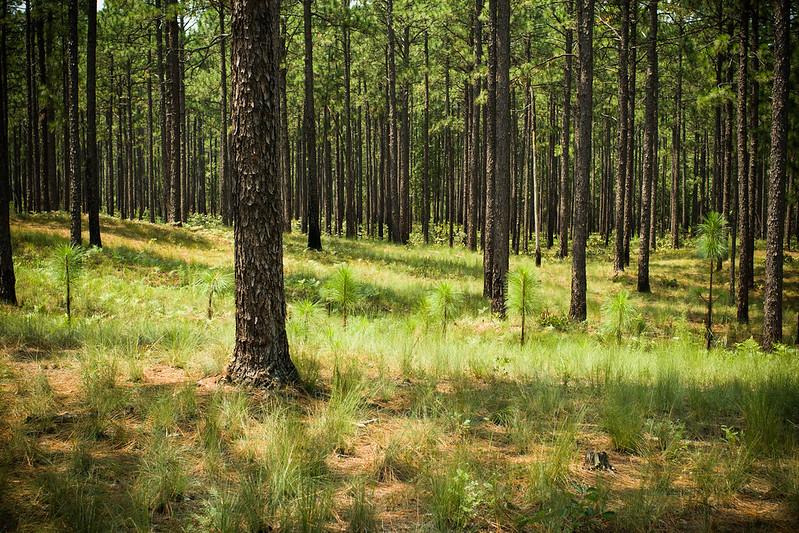Have you ever picked up a pinecone or a sprig of pine needles or touched the bark of a pine tree? You may have noticed that your fingers became sticky with pine pitch.
You can find pine trees all across North Carolina. In fact, you probably passed some today if you rode in a car, on the bus, or visited a park or nature site. This article is about one special type of pine tree in North Carolina history -- the Longleaf Pine.

Ecology of the Longleaf Pine
The longleaf pine is an evergreen conifer. An evergreen conifer is a tree that stays green year-round and makes cones that hold its seeds. The tree is also native to the southeastern United States. That means that this species of tree grew in the area long before European settlers arrived. Longleaf Pine trees like sandy, acidic soil, and they don’t like shade.
Longleaf pines grow straight and tall and do not have many lower branches. They are able to prune themselves naturally. They can grow quite tall – from 80 to 100 feet. They have tough bark that is very resistant to fire. Pine trees thrive where there have been frequent forest fires. Fire clears the plants on the forest floor and allows seeds to reach soil. Forest fires can occur in nature from lightening. And they keep down smaller trees to let bigger, stronger trees like pines get more sun.
There are more than 370 million acres in the southeastern United States. And a long time ago longleaf pine forests covered more than 90 million of acres of this area. That’s about ¼ of the total area, so you can imagine how many pine trees there were. There are only about 3 million acres of longleaf pine forest left in the South today.
Human Beings and the Longleaf Pine
Native Americans lived in North America for hundreds of years before Europeans came. They understood that fire was important in nature. They used fire to help take down pine trees, and clear underbrush and to clear areas for planting crops. They also used fire to create wildlife habitat and help with hunting. The longleaf grew well in this environment shaped by both nature and human beings.
Longleaf pine forests began to thin out with the arrival of European settlers in the 1700s. Colonial settlers cut trees to build homes and buildings. And the trees were especially important in an industry called naval stores. This is the industry related to building and sailing ships. England had cut down most of its forests. But it still had a great need for lumber and other products from trees to build ships. And so it looked to the colonies for these resources.
Settlers and industry in North Carolina used pines trees in many ways. Lumber was used for buildings, ships, barrels and other needs. And wood and sap were used to make tar and turpentine. This work required large numbers of workers. So it depended on the forced labor of enslaved people. The work was harsh and very dangerous. And disabling injuries or even death were common, from cuts, burns, and explosions.
Later on in the 1800s with the invention of trains, pine trees were logged to build railroad tracks. And longleaf pines quickly declined. During this time, the loblolly pine began to replace the longleaf. It is also native to the area, but it is more tolerant of a variety of soils and faster growing. In the 20th century, the loblolly became important for the paper industry in the South. Today, the paper industry contributes $2 billion each year to the state’s economy.
Throughout human history, pine trees and other evergreen trees have also been used to make natural medicines and skin treatments.
North Carolina State Tree: The Pine Tree
In 1963 the North Carolina general assembly selected the pine tree as the official state tree. The pine tree was selected because of its importance to both the natural environment and its role in human history and industry. The General Assembly did not select a particular type of pine tree.
To learn more, visit these NCpedia articles: